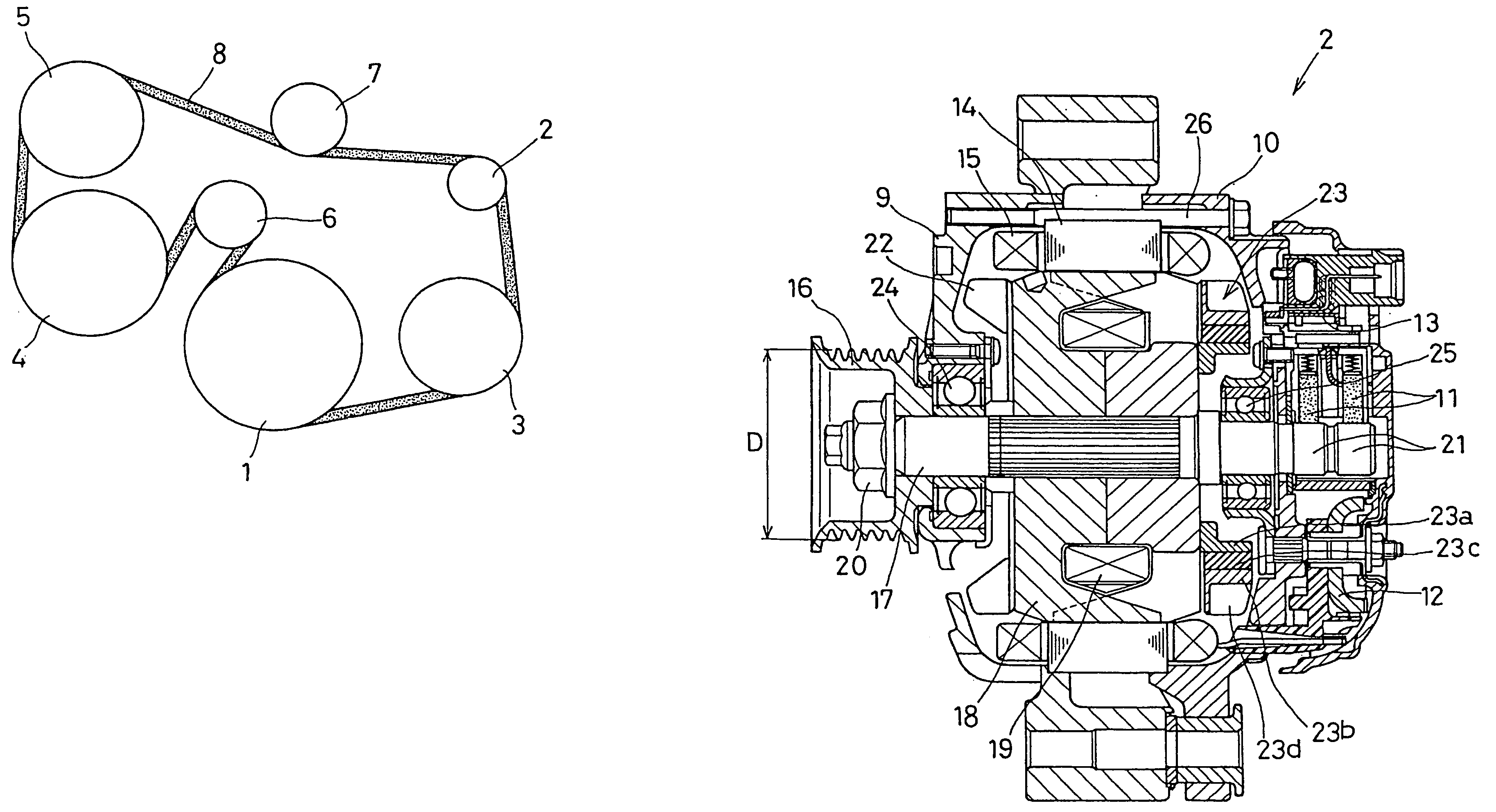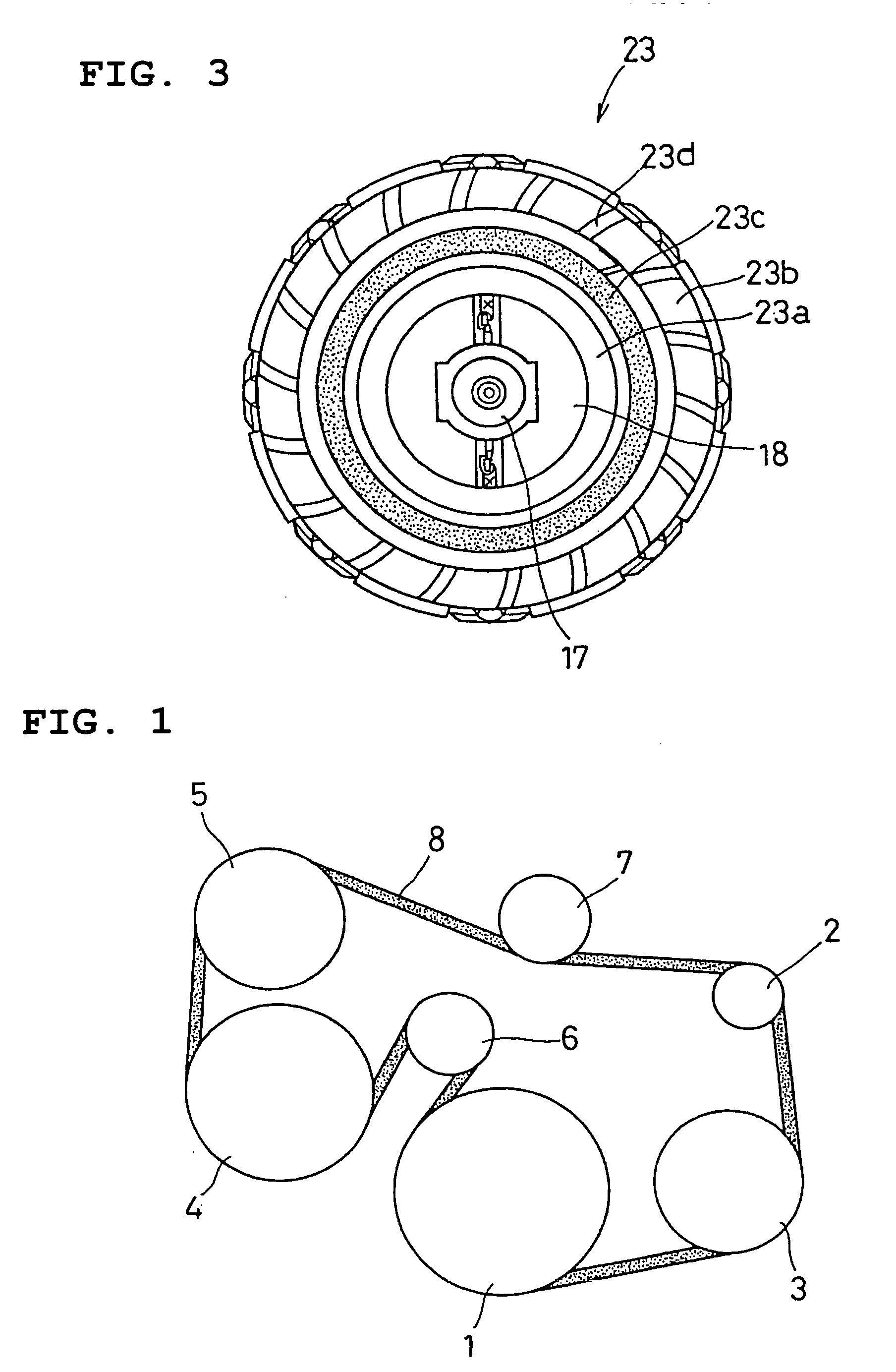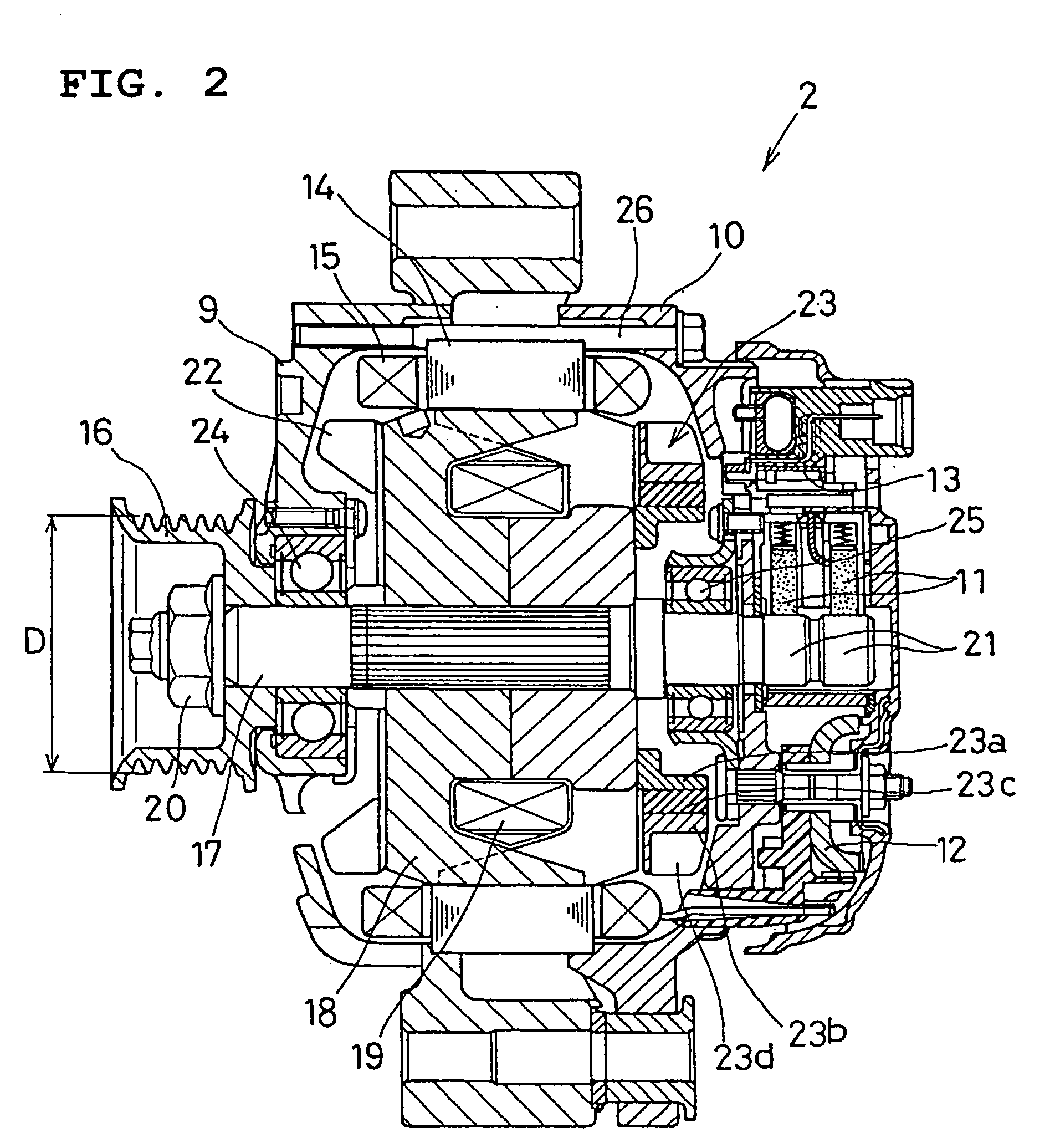Engine belt-driven system
a belt-driven system and engine technology, applied in the direction of machines/engines, mechanical equipment, machine/engines, etc., can solve the problems of lowering the durability of the alternator, requiring a mass as large as about one tenth of the alternator, and the unstable of the vehicle engine, so as to sacrifice the durability of the vehicle alternator, and improve the stability of the engine belt-driven system
- Summary
- Abstract
- Description
- Claims
- Application Information
AI Technical Summary
Benefits of technology
Problems solved by technology
Method used
Image
Examples
first embodiment
[0040]FIG. 1 is a layout diagram of an engine driven system according to a first embodiment of the invention. The engine driven system includes an alternator 2, an air conditioner compressor 3, a water pump 4, and a power steering hydraulic pump 5 as auxiliaries which are belt-driven by a vehicle engine 1. The engine driven system further includes an auto tensioner 6, and a V-ribbed belt 8 which couples pulleys of these auxiliaries to a crank pulley of the engine 1. This engine driven system is a serpentine belt-driven system.
[0041]FIG. 2 is a cross-sectional view of the alternator 2. The alternator 2 includes a stator, a rotor, a front housing member 9, a rear housing member 10, a brush 11, a rectifier 12, and a voltage regulator 13. The stator includes an annular stator core 14, and an armature winding 15 wound around the stator core 14. When the rotor rotates, an AC voltage is induced in the armature winding 15.
[0042] The rotor includes a rotating shaft 17 to which the rotation...
second embodiment
[0080]FIG. 5 is a cross-sectional view of an alternator 2 of an engine driven system according to a second embodiment of the invention. As shown in this figure, the alternator 2 of this embodiment has two dynamic absorbers 23 mounted to the both end surfaces of the rotor corer 18.
[0081] The alternator 2 of this embodiment has a still higher durability, because the inertia moment is spread to the both sides of the rotor core 18.
[0082] Incidentally, in this embodiment, it is necessary to change the spring constants of the dynamic absorbers 23 according to their masses.
[0083] The alternator of this embodiment has good self-cooling performance, since each of the dynamic dampers 23 has fan blades 23.
third embodiment
[0084]FIG. 6 is a partial cross-sectional view of an alternator 2 of an engine driven system according to a third embodiment of the invention. In the third embodiment, a torsion spring 23e is used as the elastic member of the dynamic absorber 23.
[0085] The spring 23e is configured to increase its tightness when compressed to have hysteresis characteristics. The dynamic absorber 23 is excellent at heat resistance, because it can be made of only metals.
PUM
 Login to View More
Login to View More Abstract
Description
Claims
Application Information
 Login to View More
Login to View More - R&D
- Intellectual Property
- Life Sciences
- Materials
- Tech Scout
- Unparalleled Data Quality
- Higher Quality Content
- 60% Fewer Hallucinations
Browse by: Latest US Patents, China's latest patents, Technical Efficacy Thesaurus, Application Domain, Technology Topic, Popular Technical Reports.
© 2025 PatSnap. All rights reserved.Legal|Privacy policy|Modern Slavery Act Transparency Statement|Sitemap|About US| Contact US: help@patsnap.com



